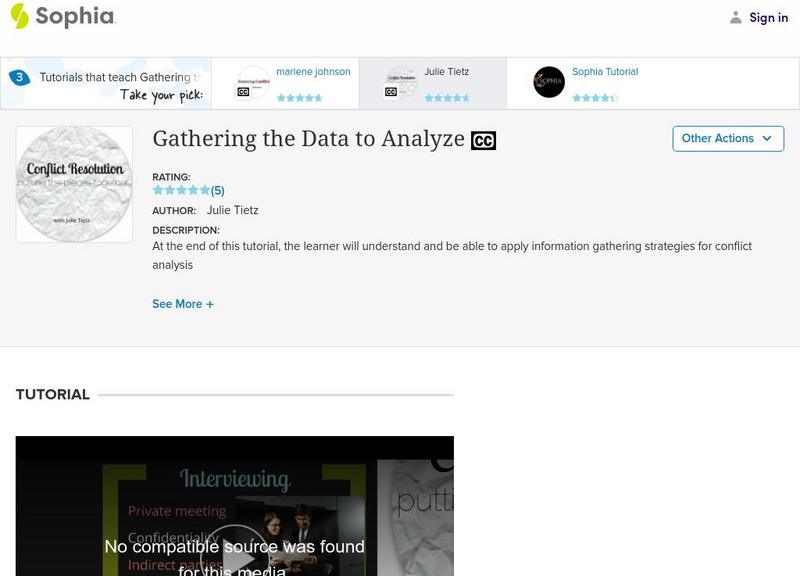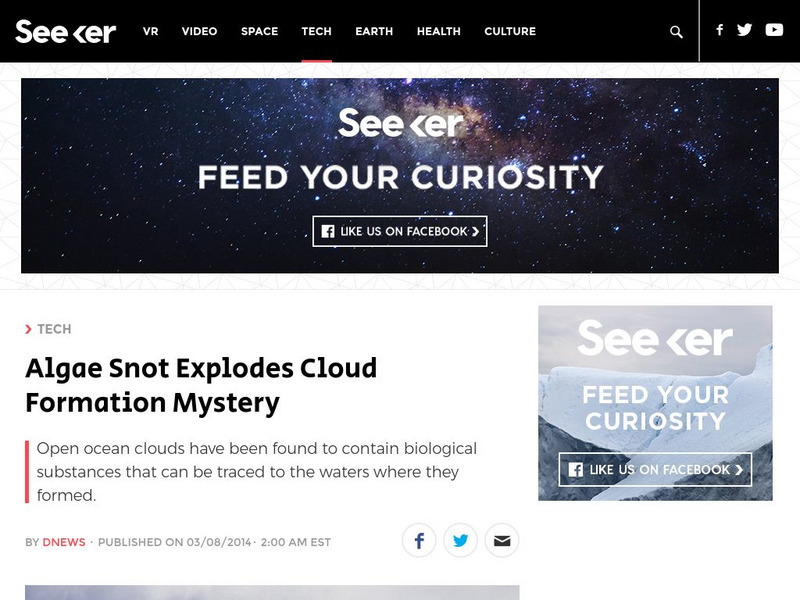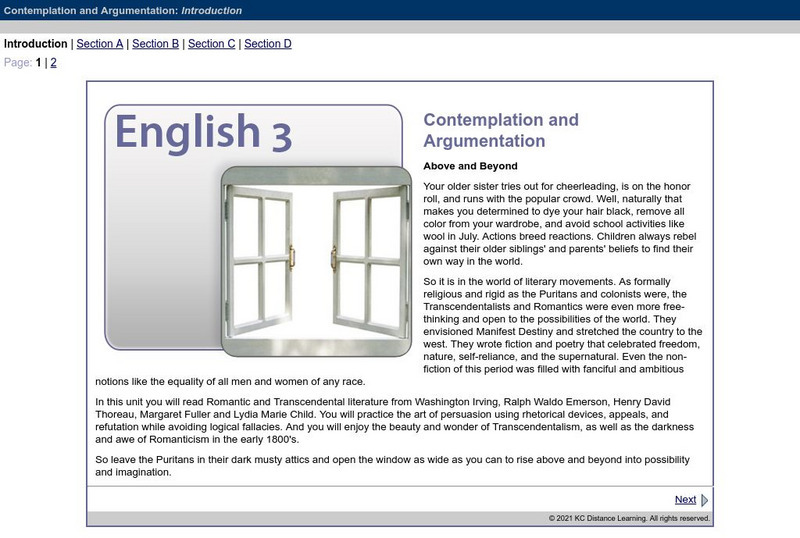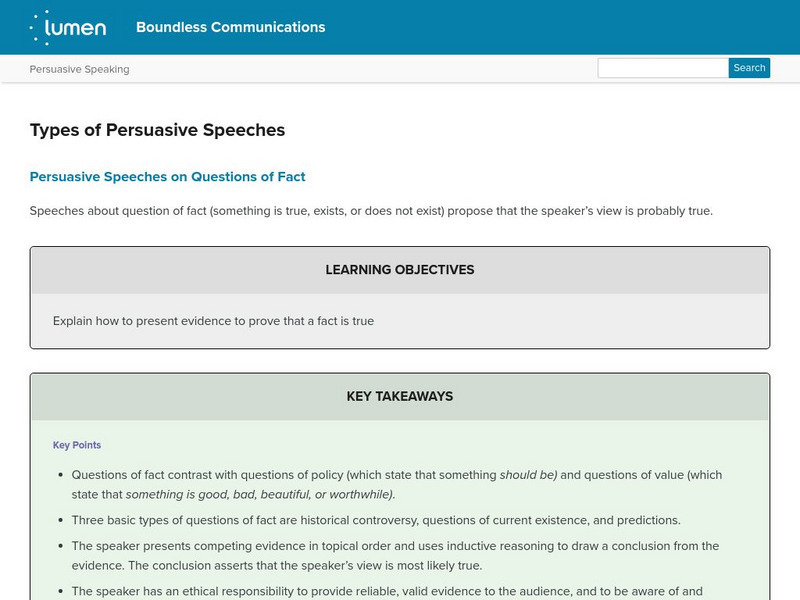New York State Education Department
TASC Transition Curriculum: Workshop 11
You'll C-E-R a difference in classroom achievement after using a helpful lesson plan. Designed for economics, civics, government, and US history classes, participants practice using the CER model to craft arguments about primary and...
University of South Florida
Fcat Express: Fact & Opinion
Strategies to help students recognize the difference between fact and opinion provided by a standardized test preparation site intended for fourth grade. Includes teaching ideas such as analyzing facts and opinions in newspapers, and...
Texas Education Agency
Texas Gateway: Analysis of Relative Values of Specific Data, Facts, and Ideas
[Accessible by TX Educators. Free Registration/Login Required] This lesson focuses on analyzing and evaluating the value of the sources used for evidence in a research project.
Other
Ocean Tracks: Fact or Artifact? Interpreting Patterns in Ocean Tracks Data [Pdf]
Ever wonder where marine animals go? How fast they swim? How deep they dive? Electronic tagging has opened a new window into the world of the open ocean. Ocean Tracks gives you access to data collected by tags on real live migrating...
Texas Education Agency
Texas Gateway: Analyze Literary Essays' Inclusion of Personal Opinions and Facts
In this lesson, you will learn how to identify and discuss the use of facts, personal examples, and ideas and how they are woven into a literary essay.
Sophia Learning
Sophia: Start Where You Are: Gathering the Data to Analyze: Lesson 2
At the end of this tutorial, the learner will understand and be able to apply information gathering strategies for conflict analysis. It is 2 of 3 in the series titled "Start Where You Are: Gathering the Data to Analyze."
Texas Education Agency
Texas Gateway: Analysis of Relative Values of Specific Data, Facts, and Ideas
[Accessible by TX Educators. Free Registration/Login Required] In this lesson, you're going to begin to think about how to analyze the data, facts, and ideas that you need to support your argument, the final step in planning your...
Ted Nellen
Cyber English (By Ted Nellen): Poetry Analysis Fact Sheet
This is a Poetry Analysis Fact Sheet that includes how to analyze the parts of a poem including the title, connotations, tone, shifts, theme, poetic devices, and writing a paraphrase.
Alabama Learning Exchange
Alex: Newspapers: Facts and Opinions
In order to sharpen a student's understanding of the differences between facts and opinions, this lesson incorporates both the close reading of a newspaper and the writing of a factual article and a letter to the editor.
Texas Education Agency
Texas Gateway: Analysis of Relative Values of Specific Data, Facts, and Ideas
[Accessible by TX Educators. Free Registration/Login Required] In this lesson, students can practice finding specific types of sources and learn the questions to ask when evaluating information for a persuasive essay.
Other
Gapminder: Unveiling the Beauty of Statistics for a Fact Based World View
Gapminder collects hundreds of statistics related to global economic, health, and social development and analyzes the relationships between them across different countries and time (a few indicators go back to 1800).
ClassFlow
Class Flow: Fact and Opinion
[Free Registration/Login Required] Designed for grade 6, this flipchart covers the differences between fact and opinion. Students will analyze statements to determine if they are a fact or if they are an opinion.
TED Talks
Ted: Ted Ed: How Can You Change Someone's Mind? Hint: Facts Aren't Always Enough
Why do arguments change people's minds in some cases and backfire in others? Hugo Mercier explains how arguments are more convincing when they rest on a good knowledge of the audience, taking into account what the audience believes, who...
Centers for Disease Control and Prevention
Centers for Disease Control: Bam! Body & Mind: Teacher's Corner: Collect & Analyze Safety Data
Students explore facts and figures for causes of injuries and deaths of children their age by conducting a classroom survey and analyzing the data. Students learn about different kinds of health data collected by the government, and...
Curated OER
Mc Graw Hill: Analyze Language Choices
Learn about figurative language and how to determine the figurative, denotative, and connotative meanings of words.
ProCon.org
Pro Con: d.a.r.e.
Website with lesson dedicated to exploring the pros and cons of D.A.R.E. (Drug Abuse Resistance Education) program. Contents include importanct facts, pro and con chart, video, background information and links to related resources.
Seeker
Seeker: Week of 3 10 14: Fingerprinting Clouds
Scientist have recently discovered that clouds possess far more unique traits than just their shapes. Read about the scientific discovery that at least some clouds contain biological particles that can be analyzed to show where the cloud...
Department of Defense
Do Dea: Contemplation and Argumentation
In this self-guided unit, you will read Romantic and Transcendental literature and you will practice the art of persuasion using rhetorical devices, appeals, and refutation while avoiding logical fallacies. By the end of the unit, you...
Lumen Learning
Lumen: Boundless Communications: Types of Persuasive Speeches
This activity focuses on three basic types of persuasive speeches: fact, value, and policy and information about each. It also provides questions you should ask yourself when analyzing a speech.
PBS
Pbs Teachers: Targets
Examine the reasons alcohol advertisers target young people, and interpret the "real" messages in alcohol advertising. Learn basic facts about alcohol abuse to create a factual poster about alcohol.
Other
Center on Alcohol Marketing and Youth
The Center on Alcohol Marketing and Youth reports on the marketing practices of alcohol producers and on the dangers of underage drinking. Resources include an overview of alcohol marketing (also available in Spanish), examples of print...
A&E Television
History.com: 10 Things You May Not Know About the Cuban Missile Crisis
Explore 10 surprising facts about the moment when the Cold War turned red-hot.
Diffen
Diffen.com
Diffen aims to provide a one-stop shop for information that is unbiased, free, concise, and easy to understand.
HotChalk
Hot Chalk: Lesson Plans Page: Spooky Spiders
This simple lesson plan is designed to introduce young students to the characteristics of a spider and to classify whether a spider is an insect or an arachnid by analyzing its characteristics.


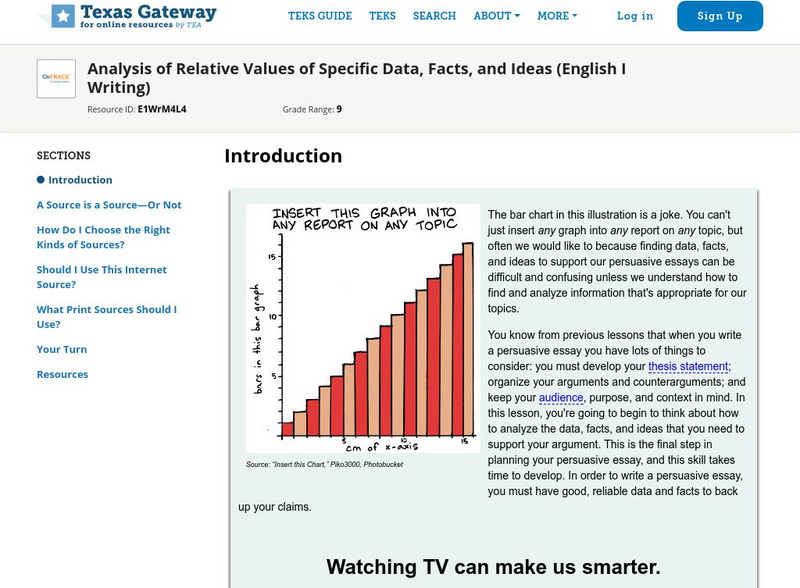
![Ocean Tracks: Fact or Artifact? Interpreting Patterns in Ocean Tracks Data [Pdf] Lesson Plan Ocean Tracks: Fact or Artifact? Interpreting Patterns in Ocean Tracks Data [Pdf] Lesson Plan](https://d15y2dacu3jp90.cloudfront.net/images/attachment_defaults/resource/large/FPO-knovation.png)
